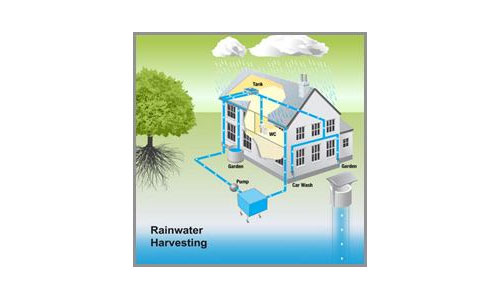We are Manufacturer, Supplier, Exporter, Services Provider of Rainwater Harvesting Systems (RWH Systems), Rainwater Harvesting Projects and our setup is situated in Pune, Maharashtra, India
Rainwater harvesting (RWH) is the collection and storage of rain, rather than allowing it to run off. Rainwater is collected from a roof-like surface and redirected to a tank, cistern, deep pit (well, shaft, or borehole), aquifer or a reservoir with percolation. Dew and fog can also be collected with nets or other tools. Rainwater harvesting differs from storm water harvesting as the runoff is collected from roofs, rather than creeks, drains, roads or any other land surfaces.
Rainwater harvesting is one of the simplest and oldest methods of self-supply of water for households, and residential and household scale projects usually financed by the user. However, larger systems for schools, hospitals and other facilities can run up costs only able to be financed by companies, organization and governmental units.
Rain water is a vastly under-used natural resource that we often take for granted. There are many reasons to collect rain from your roof. Because rain water is naturally soft water devoid of chemicals such as chlorine it is healthier for your garden, landscape and indoor plants. By harvesting rain, you will create a smaller impact on your municipal water source and reduce the amount of water you contribute to storm runoff. During the rainy months you can use the overflow on your rain barrel to divert water away from the storm system and into a permeable surface.
Rainwater harvesting is the process of accumulating and storing rainwater for on-site use instead of allowing it to run off. Rainwater provides an independent and free water supply that offers several ways the water can be used. The following are 5 advantages of harvesting rainwater.
- Reduces Flooding and Erosion.
- Reduces Water Bills
- Reduces Demand on Ground Water
- Can Be Used for Non-drinking Purposes
- Can Improve Plant Growth
